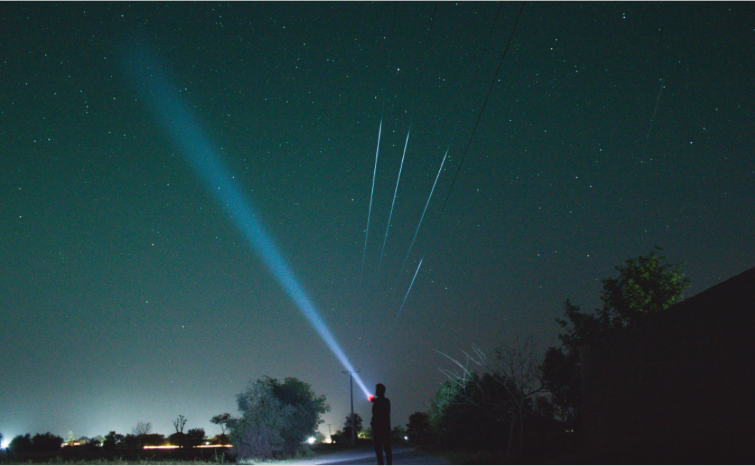Amazing facts about comets

Comets are beautiful astronomical visions that consist of three parts: the nucleus, the coma and the tail. The comet’s core is filled with frozen gases, dust and stones which are released during orbit to create a coma (atmosphere) and tail.
A typical comet can be the size of a small town.
Comets emit dust and gas as they approach the Sun and heat up. This makes the comet shine and it creates a tail that can measure millions of kilometers. Due to the composition of the comet, they got nicknamed by NASA – dirty snowballs.
The first telescopic observation of a comet was in 1618. At that time, the Swiss astronomer Johann Cysar (1586-1657) observed the comet with a telescope.
The brightest periodic comet is Halley’s, which returns in periods of 76 years. The comet was mentioned throughout history. There are records of the comet made by the Chinese, Babylonians and medieval Europeans. The earliest mention was from 240 BC.
The first attempt to observe the transit of the comet (Halley’s) in front of the Sun was made by the American astronomer Ellerman in May 1910. In order to observe it under the best possible conditions, Ellerman traveled to Hawaii, but nevertheless failed to see the comet.

The first comet known to have fallen to the Sun was Comet 1979 XI. It hit the Sun on August 31, 1979.
The first predicted short-period comet was Enke’s.
The comet with the shortest period is also Enke’s: 3.3 years. It is possible that there is a comet with a shorter period of orbit around the Sun, but so far, no such comet has been recorded.
The comet with the longest confirmed period is Grigg-Mellish. It was observed in 1742 and then in 1907.
The largest comet ever recorded was probably observed in 1811. The diameter of its coma was about two million kilometers – a larger diameter than the Sun. The tail of the comet was 160 million kilometers long.
The longest tail belonged the Great Comet from 1843. Its tail stretched for as much as 330 million kilometers.
The comet with the most tails is Comet DeCheseaux. It appeared in 1744 and had as many as six shiny, wide tails.
The comet with the longest calculated period is the Delaware comet. It was recorded in 1914 and will return in 24 million years.
The first time our Earth passed through a comet’s tail was, as far as we know, in June 1861. The comet itself passed 1.8 million kilometers from the Earth. No effect of this passage was observed. The comet was discovered by J. Tebbutt from Australia.
The first comet found during the Sun eclipse was the Tewfix Comet (1882).

The greenest comet was the Jurov-Achmarov-Hassel comet from 1939. The color green was seen even through small telescopes.
The farthest comet ever observed was Stearns’ comet. It was observed in 1927. It flew more than 1,500,000,000 km away from the Sun.
Comet C-6 has a body which is about 40 kilometers long. When the Sun warms its surface, it expels water (like gas). But the question is how much water exactly? Researchers have found that Comet C-6 spews enough water in 100 days to fill an Olympic pool!
There are at least 5,253 known comets, but it is believed there are many more. It is assumed that Ort’s cloud, which is located on the outer edges of our solar system, is home to about a trillion comets.

